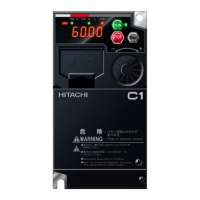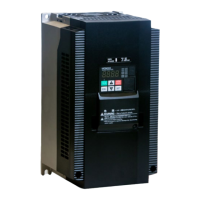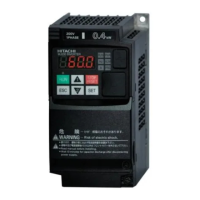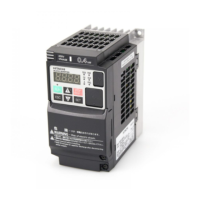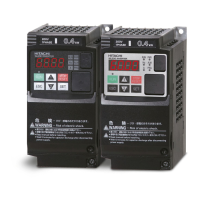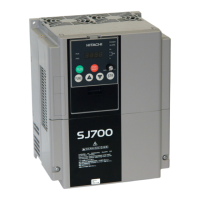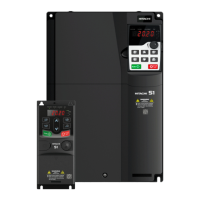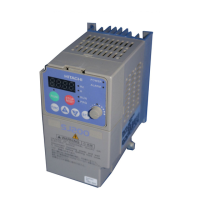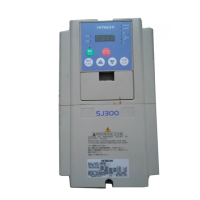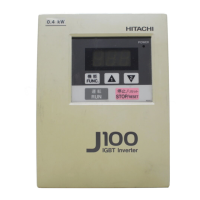Chapter 9 Inverter Functions
9-10-2
9.10.2 Automatically Reducing Carrier Frequency
How to automatically lower the carrier frequency according to the output current of the
inverter?
How to automatically lower the carrier frequency according to the temperature of the inverter?
The higher the carrier frequency is, the more the internal temperature of the inverter increases,
which may cause shorter service life or failure. The automatic carrier frequency reduction
function reduces inverter life degradation by automatically lowering the carrier frequency
according to the output current or cooling fin temperature.
Current derating specifications may require the carrier frequency lower than that of this
function. In such cases, lower the "Carrier frequency [b083]" to meet the current derating
specifications for each model, or review the operation pattern or system so that the maximum
output current becomes smaller. For details, refer to "17.3 Current Derating".
The carrier frequency fluctuations range from the upper limit of the "Carrier frequency [b083]" to
the lower limit of 3 kHz. When [b083] is less than 3 kHz, this function becomes disabled.
The operating rate is 2 kHz per second when the carrier frequency is changed
■ Output current-dependent reduction ([b089] = 01)
When the output current exceeds a certain percentage of the rated output current, the carrier
frequency is reduced.
The carrier frequency automatically returns to the normal value when the output current is
lowered.
■ Cooling fin temperature-dependent reduction ([b089] = 02)
When the cooling fin temperature exceeds a certain value, the carrier frequency is reduced.
Carrier frequency automatically returns to the normal value when the temperature drops.

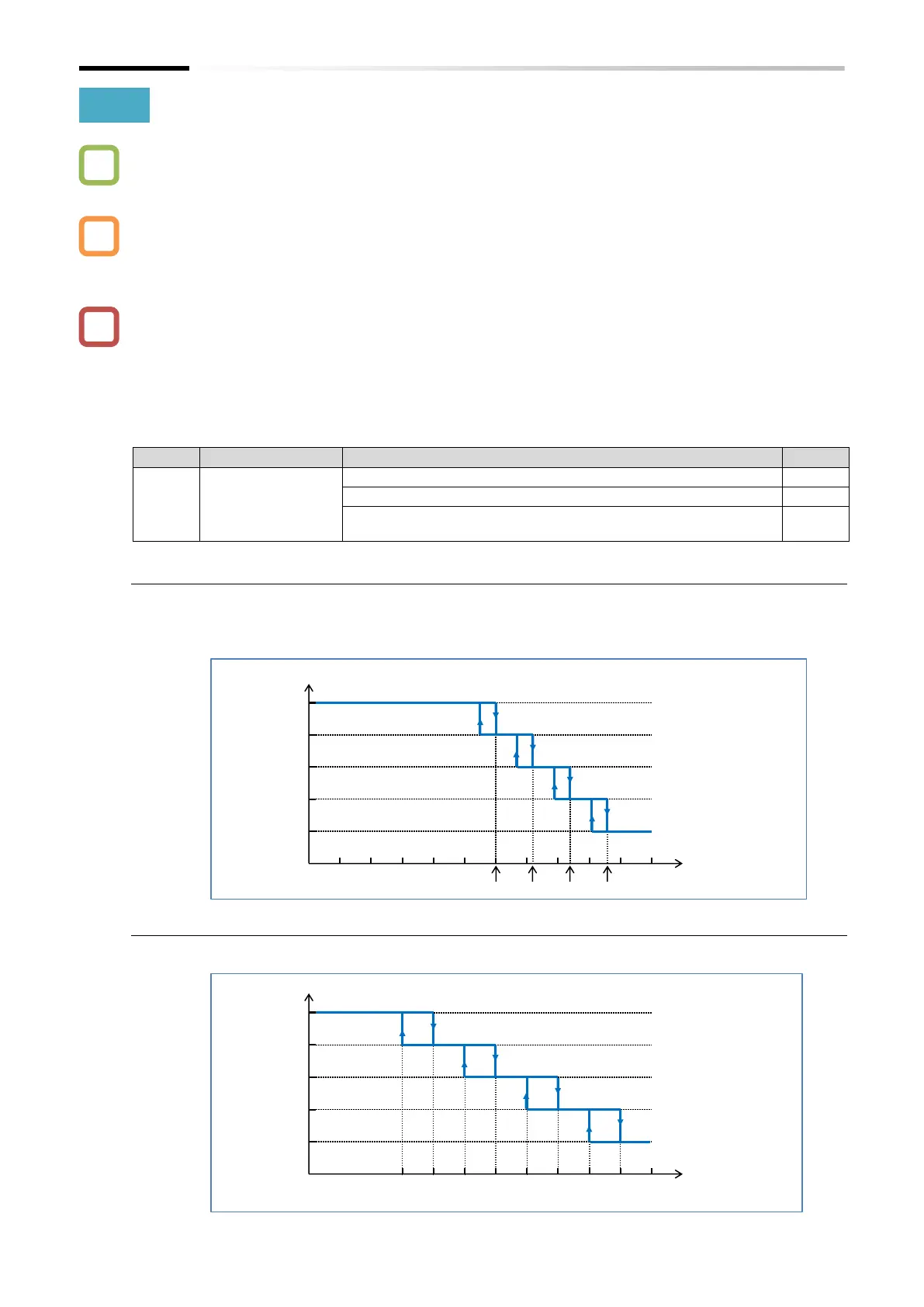